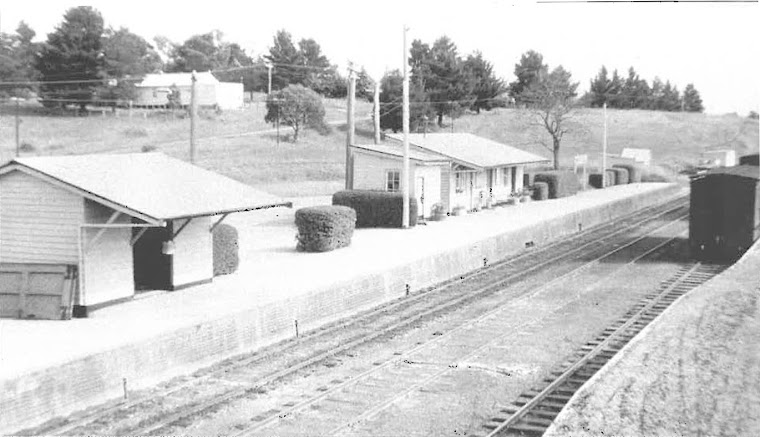As this is the first significant landscaping job I've done on a model railway since I was a kid, I'm surprised about just how forgiving it is. If the colour is wrong, you can go over it, sand it back, repaint it, whatever; but nearly any mistake can be rectified.
For best effect, landscaping progresses in layers and stages. Using a several excellent references and a number of materials, the photos show where I've got to. No area is finished yet, but you can see that some areas are close.
Two significant additions are the static grass applicator, which I made for under $35 following the instructions at http://csxdixieline.blogspot.com/2010/06/howto-static-grass-applicator.html I tried it out today and it worked a treat. This is surprising, because rarely do I find that something I have wired up first-go works. In this photo, the area in the foreground has been landscaped with static grass.
Secondly, I scratchbuilt a rail-rack and gang shed. Again, there are some excellent references available to help the modeller obtain an accurate and authentic result. I recommend Branchline Modeller 1, and in particular Jim Longworth's article "A Desktop History of Gang Sheds in NSW" in ARHS Bulletin, May 1999, pp172ff.
I purchased a UNEEK rail rack, but was disappointed to find that it seems to be cast from a Code 100 rail master. So it doesn't have that spindly look of the prototype, which would be made from much lighter rail. So I scratchbuilt one from Code 55 rail, again with reference to the article in Branchline Modeller 1. I'm happy with the result so far. It needs a bit of dry brushing to highlight the detail.
Further to my previous post, the gang shed appeared to be painted in medium stone, which James McInerney pointed out was little used after 1954 (Thanks James!). Also, as Tom pointed out to me, (thanks Tom!) the latest Country Branch Lines book, which features the Blayney-Cowra cross-country line shows other gang sheds on the line painted the same colour. So confident that the gang shed was medium stone in 1953, that it what I've painted it. I've started weathering by giving it a couple of thin black washes which has settled nicely into the corrugations and around hinges and latches.
I've also given the station building a once-over to tone down the pristine medium stone and give it that slightly faded look. The clapboard has been accentuated with a couple of washes of thin matt black humbrol enamel.
After painting with acrylics, the cutting on the northern end of the yard has been generously covered with red dust (from Chucks). The prototype is a pinker red rather than this orange tint, but it's the base coat- I will work in some other flock and drip on some diluted acrylic to add some natural variation.

Also, there are quite a few weeds growing in the cutting, as the recent photo below shows.
This view of the eastern face of the cutting clearly shows the variation in colour, particularly from the top to the bottom.
I am in the process of adding long grass and weeds using the process described in Barry Norman's Wild Swan book on modelling landscapes. This involves bleaching carpet underlay fibres, glueing them in clumps and combing out the loose fibres before colouring with watercolours. Hopefully, I will have some pictures of that next time.









